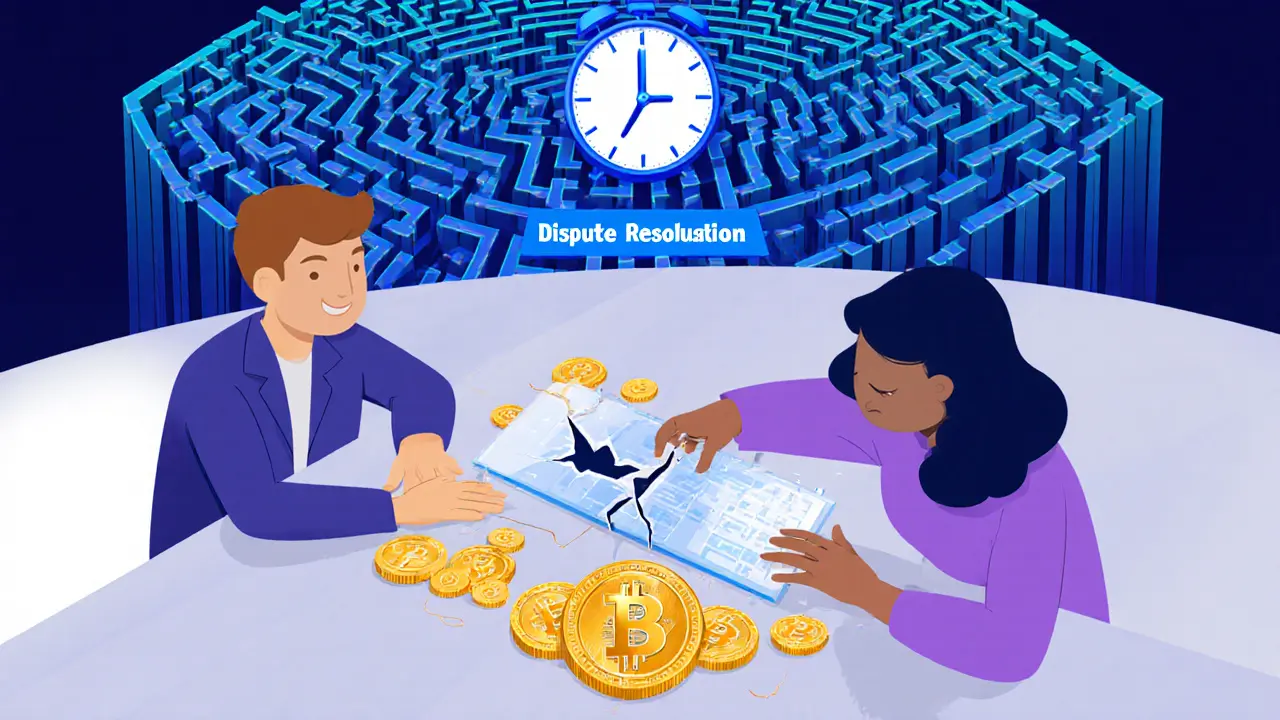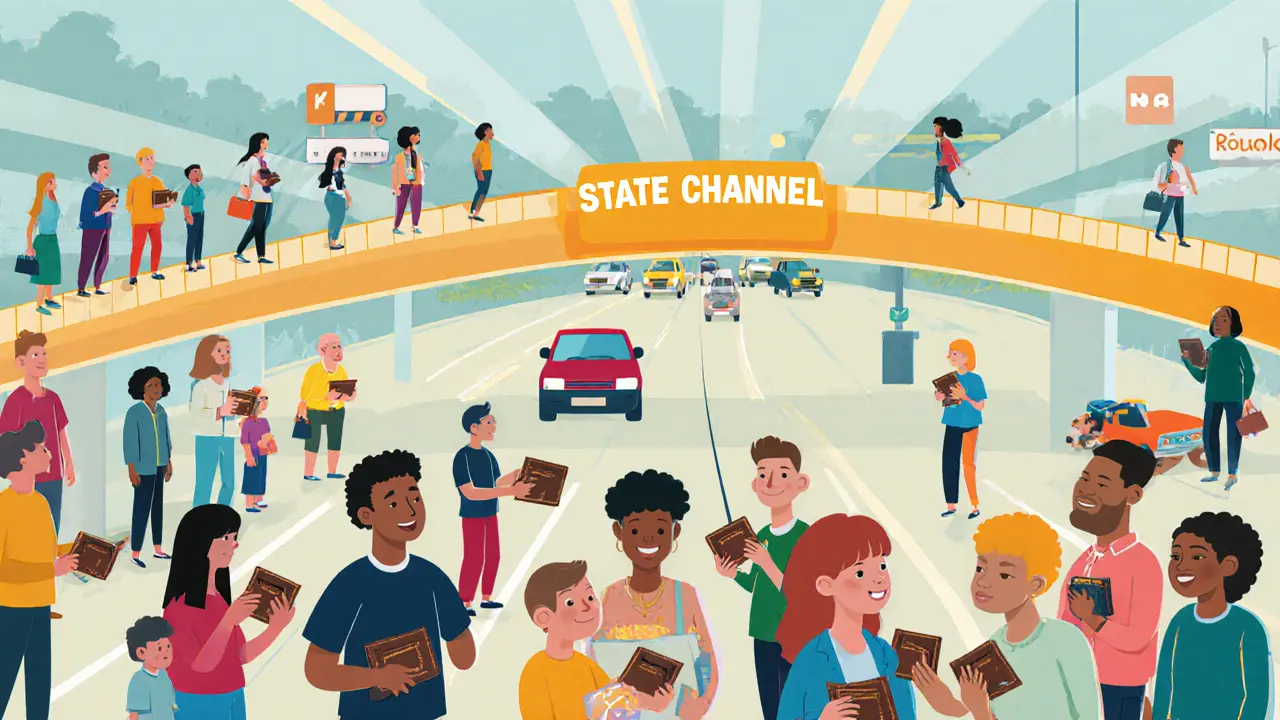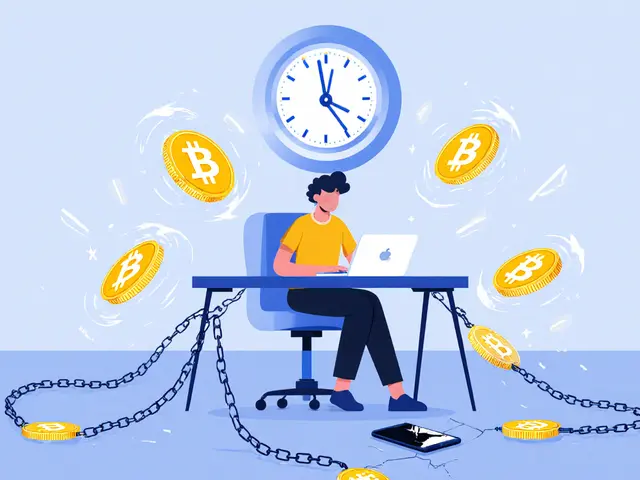State Channel Viability Checker
Your Use Case
Result Analysis
Based on your inputs, state channels are not recommended for your use case.
Key reasons: High transaction frequency combined with multi-party interactions creates significant coordination challenges.
State channels promised a revolution in blockchain scalability. By moving transactions off-chain, they promised near-instant payments, near-zero fees, and the security of the underlying blockchain. But the reality is more complicated. For all their promise, state channels come with serious, often overlooked limitations that make them impractical for most real-world use cases today.
They Need You to Be Online All the Time
One of the biggest hidden costs of state channels is the liveness requirement. To keep your funds safe, you have to be online and responsive. If your phone dies, your laptop crashes, or your internet goes out, you’re vulnerable. That’s because state channels rely on participants monitoring the channel and challenging any fraudulent state updates. If you’re offline, your counterparty could broadcast an old, unfair balance and steal your funds before you can react. This isn’t theoretical. Developers on the Lightning Network have reported frequent channel failures because mobile clients go offline. Reddit users in r/Bitcoin complain about having to rebalance channels multiple times a week just to keep payments working. It’s not a smooth experience-it’s a constant chore. That’s why services like watchtowers were created: third-party monitors that watch your channels for you. But now you’re trusting someone else, which defeats part of the point of using a decentralized system in the first place.You Have to Lock Up Your Money
To open a state channel, you need to lock up cryptocurrency. This isn’t a small fee-it’s capital you can’t touch until the channel closes. And the amount you lock up has to cover the maximum amount you plan to transact. If you want to send $500 worth of Bitcoin through a channel, you need to lock up at least $500. That’s money sitting idle, earning nothing. Dr. Christian Decker from Blockstream called this the biggest adoption barrier. Small businesses and everyday users simply don’t have the liquidity to tie up funds this way. Deloitte’s 2023 survey found that 78% of small enterprises didn’t use state channels because they couldn’t afford to lock up the required capital. Even if you have the funds, it’s inefficient. You’re not earning interest on that locked-up crypto. You’re not using it for anything else. Compared to rollups, which require far less collateral per transaction, state channels look like a financial burden.Disputes Are Slow and Expensive
State channels are supposed to avoid the blockchain for speed. But when things go wrong, you’re forced back on-chain. If someone tries to cheat by broadcasting an old state, you have to file a dispute. That dispute gets resolved by a smart contract on the main blockchain. That means paying gas fees, waiting for block confirmations, and dealing with network congestion. The Blockchain Research Institute found that 67% of developers consider dispute resolution the most frustrating technical hurdle. It’s ironic: you’re using state channels to avoid on-chain costs, but the safety net itself costs you time and money. And the logic behind dispute resolution is complex. Developers on Ethereum Stack Exchange say implementing fair dispute rules takes 20-30% longer than expected. That complexity scares off builders and slows down adoption.
They Only Work Well Between Two People
State channels were designed for bilateral transactions-two parties sending money back and forth. Think of it like a private ledger between you and a friend. But real-world applications often need more than two participants. What if you want to pay a group of freelancers? Or join a multiplayer game with 10 players? Multi-party state channels become a nightmare. Every participant has to agree on every state update. More people means more signatures, more coordination, more chances for someone to drop off or misbehave. NADCA Consulting found that managing channels with multiple participants is “hard” and “tricky.” The complexity grows exponentially. That’s why most real-world implementations-like Lightning Network-are built for peer-to-peer payments, not group interactions. If your use case isn’t one-on-one, state channels aren’t the right tool.They Can’t Handle Public or Sporadic Transactions
State channels are private. Only the two participants know the details of each transaction. The blockchain only sees the opening and closing balances. That’s fine for micropayments between trusted parties. But what if you need public verification? What if you’re building a decentralized marketplace where buyers need to see transaction history? Or a voting system that requires transparency? State channels fail here. They’re designed for privacy, not public auditability. Rollups, on the other hand, post transaction data on-chain (even if they process it off-chain), so anyone can verify everything. That’s why rollups are dominating enterprise adoption. They offer scalability without sacrificing transparency. State channels also don’t work well for sporadic users. If you only transact once a month, locking up funds and staying online just to make one payment doesn’t make sense. You’re paying a high overhead for low usage. Sidechains or even Layer 2 rollups are better suited for occasional users because they don’t require constant participation.
Development Is Hard and Documentation Is Poor
Building on state channels isn’t like writing a simple smart contract. It requires deep understanding of game theory, cryptographic commitments, and complex state transitions. ConsenSys Academy estimates developers need 8 to 12 weeks of focused learning just to become proficient. And the resources? They’re inconsistent. Lightning Network’s documentation rates 3.8/5 on GitHub. Raiden Network’s? 3.2/5. Community support is fragmented. The State Channel Community Slack has over 1,200 members, but responses to technical questions often take more than 72 hours. That’s not a thriving ecosystem-it’s a patchwork of isolated efforts. Compare that to Ethereum’s rollup ecosystem, where tools like Foundry, Hardhat, and Remix have matured rapidly, and documentation is clear, centralized, and constantly updated. Developers choose the path of least resistance. Right now, that’s not state channels.Market Adoption Is Minimal
Despite years of development, state channels are a niche solution. Gartner’s 2023 report found they make up less than 3% of enterprise blockchain scaling implementations. Rollups hold 55%. Sidechains hold 42%. State channels? Barely noticeable. Why? Because the limitations outweigh the benefits for most users. The capital lockup, the need to stay online, the complexity of disputes, the lack of public verification-these aren’t minor inconveniences. They’re dealbreakers for businesses, developers, and everyday users. The only places they’ve found traction are in specific niches: gaming microtransactions, high-frequency peer-to-peer payments, and crypto-to-fiat tipping. Even then, they’re often used alongside other Layer 2 solutions, not as standalone systems.What’s Next? Not Much
There are efforts to improve state channels. Ethereum’s Account Abstraction (EIP-4337) reduces capital requirements by 30-40%. Watchtower services help with liveness. But these are bandaids, not breakthroughs. They don’t fix the core problems: you still need to lock up funds, stay online, and deal with complex dispute logic. Forrester’s 2023 projection says it all: state channels will remain niche, capturing no more than 8% of the blockchain scaling market through 2027. They’re not going away, but they’re not scaling either. For most people, the trade-offs just aren’t worth it.Are state channels secure?
State channels are secure only if participants are online and honest. If someone goes offline, they can be cheated by an opponent broadcasting an old state. Watchtowers help but add trust assumptions. Smart contract bugs can also lead to fund loss. They’re not inherently unsafe, but they require constant vigilance.
Can I use state channels for payments to multiple people?
Technically yes, but it’s extremely difficult. Multi-party state channels require every participant to sign every update. The more people involved, the higher the chance of failure, miscoordination, or cheating. Most implementations are designed for two-party use only. For group payments, rollups or sidechains are far more practical.
Why are rollups better than state channels?
Rollups don’t require users to lock up large amounts of capital or stay online constantly. They post transaction data on-chain, so anyone can verify everything. They support public transactions, complex logic, and multi-user interactions. While they have their own trade-offs, they’re more flexible, easier to use, and better suited for mainstream adoption.
Do I need to be a developer to use state channels?
No, you don’t need to be a developer to use them-apps like Lightning Network wallets let you send and receive payments easily. But behind the scenes, the system relies on complex protocols. If something goes wrong, you can’t fix it yourself. You’re dependent on the app’s implementation, which may be buggy or poorly maintained.
Are state channels still being developed?
Yes, but slowly. The Lightning Network continues to add features like watchtowers and submarine swaps. Ethereum projects are experimenting with Account Abstraction to reduce capital needs. But development is focused on patching flaws, not expanding use cases. Most innovation in scaling has shifted to rollups, which offer broader utility with fewer trade-offs.

Joy Whitenburg
lol i just tried to use lightning and my phone died mid-payment… lost $20. now i just use paypal. why is this so hard??
Rachel Everson
Same. I used to think state channels were the future, but honestly? They’re like trying to run a marathon with ankle weights. You need to be online, lock up cash, and pray no one ghosts you. Rollups just… work. No drama.
Ashley Mona
Y’all are forgetting the real win: state channels are *private*. If you’re paying someone for a sensitive service-like therapy or adult content-rollups are a nightmare. Your transaction history’s on-chain. State channels? Silent. That’s worth something.
Arthur Crone
Of course it’s hard. You’re asking non-devs to understand game theory and cryptographic commitments like it’s grocery shopping. This isn’t a tech problem-it’s a user problem. Stop pretending it’s for everyone.
Johanna Lesmayoux lamare
My friend tried to use a multi-party channel for a group gift. It failed. Three people had to manually rebalance. Took 3 days. We just Venmo’d.
Michelle Elizabeth
Let’s be real-state channels are the crypto equivalent of owning a vintage car. Looks cool. Sounds satisfying. But you’re spending 80% of your time tinkering under the hood while everyone else just hails a Tesla. The romance is over. The utility? Barely there.
Rebecca Saffle
They’re a scam. Big tech and crypto bros push this because they want you to lock up your money so they can profit from watchtowers and liquidity pools. It’s not decentralization-it’s parasitic capitalism with blockchain glitter.
BRYAN CHAGUA
There’s value here if you’re building something niche-like a high-frequency betting app or a private supply chain ledger. But for 99% of use cases? It’s like using a scalpel to open a soda can. The tool’s not broken. The application is wrong.
tom west
Why do people still defend this? The capital lockup alone is a non-starter for anyone without a hedge fund. And the fact that you need to be online 24/7? That’s not scalability-that’s slavery. Rollups are the future because they don’t treat users like disposable nodes.
Adrian Bailey
So I’ve been running a lightning node for 2 years now, and yeah, it’s a pain. I’ve had 3 channels close because I was on vacation and forgot to enable watchtower. But here’s the thing-I’ve saved over $1,200 in fees on microtransactions. And the speed? I’ve paid for coffee with crypto and walked out before the barista finished pouring. That’s magic. Maybe it’s not perfect, but it’s the only thing that lets me pay $0.03 for a meme without paying $5 in gas. I’m not giving up yet.
ty ty
Wow. So we’re just gonna ignore that state channels were designed for people who don’t trust banks? Now we’re complaining because they require actual responsibility? Grow up.
dhirendra pratap singh
THIS IS WHY CRYPTO IS DYING. PEOPLE WANT EASY. THEY WANT TO CLICK AND FORGET. THEY DON’T WANT TO BE RESPONSIBLE. STATE CHANNELS AREN’T THE PROBLEM-THEY’RE THE TEST. AND THE WORLD FAILED.
Kylie Stavinoha
There’s a philosophical tension here: decentralization demands vigilance, but mass adoption demands convenience. State channels force you to choose between autonomy and ease. Rollups offer a middle path-but at the cost of transparency. We’re not choosing technologies. We’re choosing values.
Joanne Lee
It’s worth noting that state channels were never intended as a universal solution. They’re a specialized tool for bilateral, high-frequency, low-value transfers. Judging them against rollups is like criticizing a bicycle for not being a helicopter. Different purposes. Different trade-offs.
Debraj Dutta
In India, we use UPI for everything. Instant, free, no lockup. Why would anyone use a system that needs you to be online 24/7? This feels like a solution searching for a problem that already has a better answer.
Edward Phuakwatana
Let’s not forget the real innovation: state channels are the only L2 that can support atomic swaps, payment channels with multi-sig fallbacks, and trustless off-chain smart contracts. Yes, they’re hard. Yes, they’re niche. But they’re the only path to true trustless, private, high-throughput computation without exposing data to the public chain. Rollups are scalable. State channels are *secure*. We need both. And honestly? We’re underestimating the next-gen protocols-like state channels with EIP-4337 account abstraction-that reduce capital lockup by 40%. That’s not a bandaid. That’s a bridge.
Suhail Kashmiri
you guys are overthinking this. just use btc. no channels. no watchtowers. no drama. if you can't handle it, go back to fiat. problem solved.
Kristin LeGard
Why are we even talking about this? The U.S. government is pushing CBDCs. State channels are a dead end. This is just crypto bros clinging to a fantasy while the real world moves on.
Michelle Elizabeth
Actually, I think the real tragedy isn’t that state channels failed-it’s that we stopped trying to fix them. Watchtowers are a bandaid. Account abstraction is a step. But what we really need is a way to delegate liveness without trust. Something like a decentralized oracle network that monitors your channel and charges you in crypto for the service. That’s the future. Not rollups. Not sidechains. A new layer of trust-minimized guardianship.